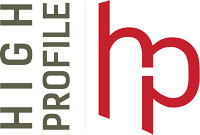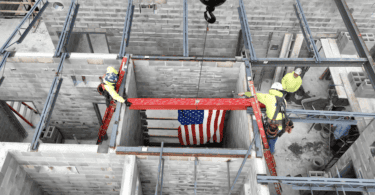by Ronald D. Ciotti
The construction industry has faced significant upheaval and uncertainty during the COVID-19 pandemic. This uncertainty has created volatility of material pricing and has been particularly disruptive to supply chains. These conditions have placed many construction firms in financially precarious positions and brought projects across our nation to a halt. Prices being paid during the procurement phase in many instances are substantially higher than the price quoted during bid preparation, with certain material costs doubling and tripling in a short time span.
Unfortunately, economists predict that material price volatility will persist for the foreseeable future. Following the pandemic, these risks will continue as global markets producing common materials are susceptible to natural disaster, political upheaval, and the impacts of climate change. This white paper is the result of a Material Issues Working Group of the Associated General Contractors of Massachusetts (AGC MA), the Associated Subcontractors of Massachusetts (ASM), owners, owner’s project managers from public and institutional clients, and construction counsel, discussing mitigation strategies for material price volatility and schedule implications. It is intended to provide owners, design professionals, contractors, subcontractors, and suppliers with specific best practices to mitigate the risk of material price and availability fluctuations on a project.
Owners
How does material volatility affect me?
- Higher project costs
- Unpredictability for scheduling
- Overinflated bid prices
- Lack of available bidders
- Under/non-performance of contractors
Although some owners believe they have insulated themselves from the impact of material price volatility by agreeing to a lump sum price at the project’s inception, project schedules can be severely impacted when the risk of material price escalation is merely pushed down to contractors and subcontractors. If all the risk is pushed down to the contractor and subcontractors, the project often halts when material prices unexpectedly increase and the contractor or subcontractor cannot solely bear the financial impact. By agreeing to share the risk with all parties involved, owners achieve better schedule predictability.
Pushing the risk of material price escalation on contractors and subcontractors can also result in inflated bid prices due to prudent contractors building the risk of material price escalation into their bid price. Owners may be forced to accept bids with inflated risk estimates which may not have been necessary had the parties discussed and implemented risk mitigating processes and reached a risk sharing agreement prior to the project’s commencement.
Moreover, those owners who refuse to share the risk of material price escalation may find that due to the substantial financial risk, many reputable contractors will decline bidding the project. As a result of the reduced reputable contractor pool, an owner’s denial of a risk sharing plan may potentially reduce the quality of a project’s construction. Finally, owners who refuse to share the risk of material price escalation may face having to accelerate their decision-making processes as a result of receiving contractor bids that quickly expire due subcontractors and suppliers not being able to hold prices.
What can I do to mitigate the risk of material volatility?
- Review design standards for material issues
- Early involvement of construction team
- Consider alternative materials, procurement, and contract stipulations
Communications at the project’s inception between all potential project participants is critical to understanding and limiting the risk of material price escalation on projects. To most effectively mitigate the risks of material price escalation and minimize the risk of material delivery delays, owners should review their design standards through a lens of material availability and pricing. At the inception of the design phase, owners should be instilling in their design teams the criticality of identifying the materials with the greatest risk of price volatility, availability, and supply chain instability. Owners should also consider delivering the project through the use of a CM at Risk, design-build, design assist, integrated project delivery, or other collaborative delivery model that allows the contractor and subcontractors to work together with the design team. This allows those who have the experience dealing with various materials’ price volatility, availability, and supply chain disruption to provide input during the design phase. Thus, by using these collaborative delivery models, the parties are given the best chance to effectively mitigate these risks during the project’s planning phase.
If a traditional delivery model is used (design-bid-build), contractors and subcontractors should review the specified project materials when received and communicate to the owner and design professional which have the greatest risks of price volatility or schedule impact and discuss the best plan to mitigate or eliminate such risks (including alternate materials, early purchase of materials, and/or an agreement on how risk shall be shared for any material price escalations experienced during the project).
Design Professionals
How does material volatility affect me?
- Creates questions of constructability from contractors
- Increases probability of design changes and/or alternative materials
- Influences client satisfaction
While design professionals may not face the direct financial risks of material price escalation affecting owners, contractors and subcontractors, they are a critical part of mitigating the risk of material price escalation and product unavailability on projects. Understanding the significant impact that these risks pose to their projects, owners are seeking design professionals who anticipate such risks and prepare designs that account for the volatility of certain materials and supply chains. Design professionals looking to continue and grow their business relationships need to be aware of, and address, the effects of material price escalation on their projects by careful selection of materials and working collaboratively when available.
What can I do to mitigate the risk of material volatility?
- Identify volatile materials and potential alternatives
- Respond in detail to RFIs
- Expedite approval of submittals associated with volatile materials
Design professionals should take the opportunity to communicate with contractors, subcontractors, and suppliers to gain firsthand knowledge of certain materials’ price volatility and availability and discuss the potential impacts with the project owners. Once materials have been selected for the project, design professionals need to be more flexible accepting suggested alternatives for volatile materials facing substantial price escalation. Additionally, the design professionals should understand that expediting the submittal approval process, on high-risk material packages, alleviates risk for the client.
Contractors and Subcontractors
How does material volatility affect me?
- Greatest exposure to price escalation during projects
- Negative client experience if not handled properly
- Negative impact to GC/subcontractor relationship if not handled properly
Contractors and subcontractors face substantial financial exposure from the risks of material price volatility when working under fixed price or guaranteed maximum price contracts. Construction firms under these traditional contract forms bear all the financial risk if material prices unexpectedly escalate and are often forced to incur massive financial losses.
What can I do to mitigate the risk of material volatility?
Contractors and subcontractors may bring some certainty to the ongoing material price instability and product availability issues by warehousing certain materials consistently used on various projects. Warehousing such materials allows contractors and subcontractors to purchase certain materials at a known price, giving them the opportunity to eliminate the risk of material price escalation in their bid. This brings predictability to what otherwise might be a risky cost item. Of course, the cost of warehousing will need to be calculated in determining the benefit of such a practice.
Bidding Phase
- Identify volatile materials
- Submit RFIs to assess potential solutions
- Enact best practical solution – negotiate contract clause, shorten bid duration, include bid contingency, etc.
At the time of bid, contractors should; (i) identify the specified materials that may be volatile in pricing or availability and devise potential solutions with subcontractors and suppliers; (ii) submit Requests for Information forms (“RFI’s) which suggest the possible use of alternative materials to the owner/design professional; (iii) discuss whether negotiation of a material price escalation clause would be entertained in order to arrive at an equitable risk sharing to increase project cost and completion predictability; (iv) attempt to lock in material prices early with suppliers; (v) shorten the time duration in which the bid remains valid; and, (vi) ensure that cost estimates at least partially account for material price escalation by using a cost index. If further protection from such risks is necessary, it may be advisable to include a generous bid contingency that accounts for potential cost escalation.
Contract Phase
- Communicate benefits of different contract language with owners
- Negotiate contract language to protect
Contracting parties seeking to eliminate or mitigate the risk of material price escalation have a number of options. The best strategy for mitigating the risk of material price escalation is to negotiate a material price escalation clause into the project’s Prime contract and carry it through all subcontracts. These include: (i) “Day One Escalation Clauses,” which require the upstream party to pay for any and all increases in the costs of specified materials; (ii) “Threshold Escalation Clauses,” which share the risk by requiring the upstream party to pay for price increases above a defined threshold; or “Delay Escalation Clauses,” which hold a fixed price for a limited period, but allow the contractor to receive an equitable adjustment if the project is delayed or if it is not feasible to purchase all materials at the start of construction. Finally, the contracting parties may discuss a Bilateral Threshold Clause which allows the parties to not only placing a defined threshold on price increases, but also a defined threshold on price decreases. This allows the parties to not only share the risk of a price increase, but also share in the benefit of a price decrease. This form of material price escalation clause is quickly gaining acceptance. ConsensusDocs Amendment 200.1 is a recommended contract amendment form that uses a bi-lateral threshold escalation clause that allows owners and contractors to share the risk and benefit.
Procurement Phase
- Determine ability for advance purchase of materials on project
- Negotiate purchase and storage costs
- Communicate last responsible time for procurement
During the procurement phase, contractors should discuss with the owner the option of purchasing materials with the highest degree of price volatility as early as possible to increase cost predictability. If this process is used, the parties will have to account for increased storage costs. This process’ beneficial predictability is contingent on the design’s completion percentage. Contractors should also negotiate the right of suppliers to increase material prices by either (i) limiting the suppliers’ right to increase price to “the contractor’s rights to increase prices to the owner”; or (ii) limiting the suppliers’ right to increase price to a fixed amount (thereby capping the risk).
Suppliers
- Communicate with contractors about material volatility
- Proactively identify alternative materials
Suppliers obviously play a key role in mitigating the risk of material volatility. Suppliers need to continuously notify contractors and subcontractors of material availability and which materials may have supply chain disruptions or significant price increases. It is also critical for suppliers to assist their clients with alternative materials with more predictable availability, delivery and cost.
Suppliers who will not agree to certain risk sharing process mentioned above in the “Contractors and Subcontractors’ Procurement Phase,” risk losing business relationships. Suppliers should understand that sharing the risk with their clients through holding prices or capping price increases is important if they are to maintain relationships through this volatile pricing period.
Conclusion
The volatility of material prices and inconsistency in product availability is a serious and significant risk to all parties involved with a project. In order to best mitigate these risks, all parties should encourage clear and open communication from the outset of a project. By sharing in the risk and being flexible with design, owners, design professionals, contractors and subcontractors keep projects moving forward with more predictable costs and timely schedules. Without such communication and collaborative mitigation, projects face delay, suspension or collapse, and firms face the disastrous reality of massive financial losses.
Ronald D. Ciotti is partner at Hinckley Allen, a member of the Associated General Contractors of America’s board of governors, and a national director for the Associated Builders and Contractors.












